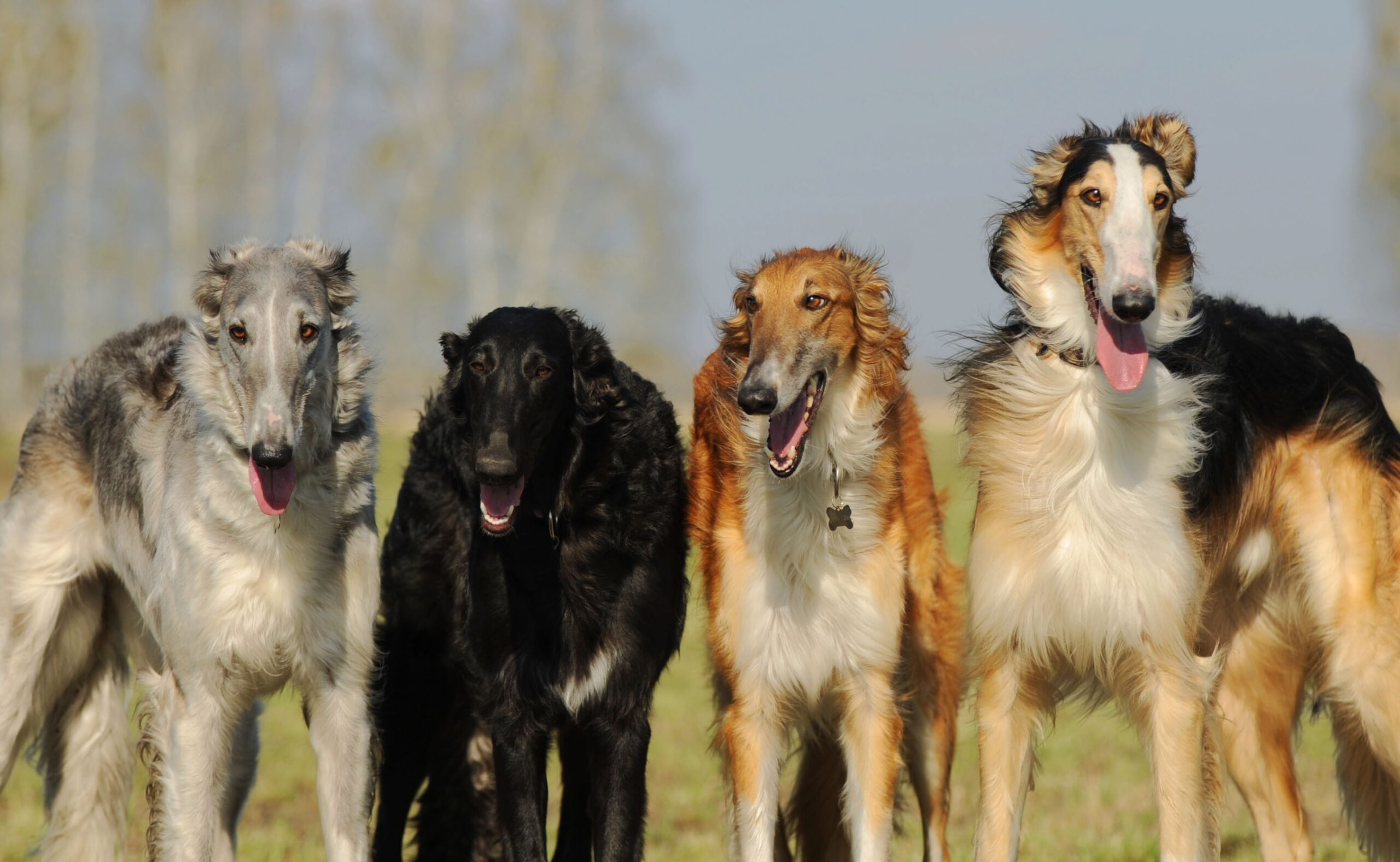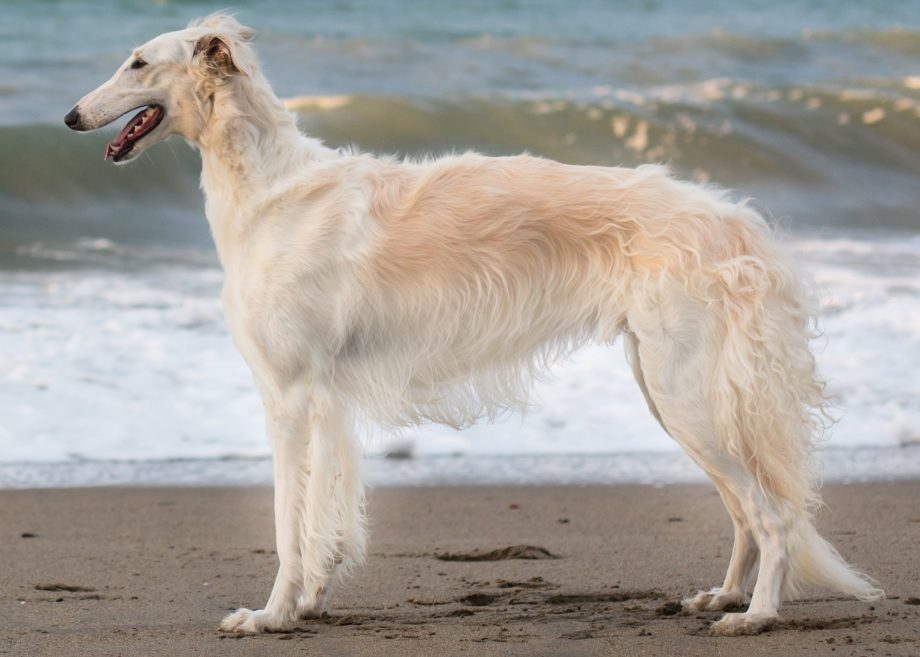The Borzoi is a tall, elegant wolfhound originating in Russia. With its long narrow head, luxurious silky coat and slender legs, this breed oozes grace and glamour.
The word borzoi means swift and this dog certainly lives up to its name, loving nothing more than being able to stretch out and really run. As such, this is a breed that requires an owner who can provide adequate exercise and opportunities for it to be able to be off leash in an open space where it can run. Once home, however, the Borzoi is very content to quietly lounge around and will enjoy the company of its family. Although affectionate and good-natured, this is also a very dignified and sometimes sensitive breed, who will not readily embrace too much rough and tumble and should always be handled quietly and gently.

History
Originating in Russia, the Borzoi was a well-established breed by the 16th century, where it was highly prized by the Russian aristocracy as a hunting dog, used for its excellent speed and sight to chase and run down foxes, hares and wolves. It is thought that this breed was developed from greyhounds, crossed with long-haired sheepdogs. Most of these dogs were killed after the Russian Revolution due to their association with the Russian aristocracy. The Borzoi of today descends from a few that escaped death and from dogs that had been gifted to foreign dignitaries.





